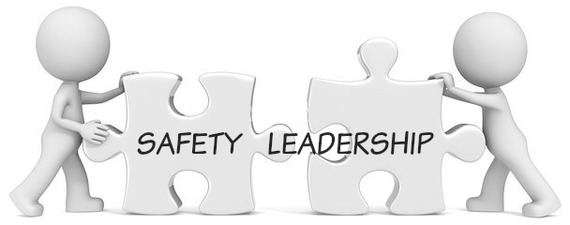
Every year, many businesses are forced to spend billions of dollars on costs associated with workplace injuries and illnesses. These costs are directly deducted from the company's profits, often putting them at a loss. It is no secret that companies, who promote and encourage a culture of safety within their work environment, reduce the costs associated with workplace injuries and illnesses by up to 40 percent. Unfortunately, establishing a healthy and safe work environment is not as simple as solely implementing standards and rules. Company managers, as well as those in high tiers of the organization, must display effective leadership. If there is one thing I have learned from my experience in the field, it is that, leadership by example influences employees' perception of the way health and safety in the workplace is managed; those perceptions then go on to influence employees' on-the-job behaviors and decisions.
So why does safety leadership matter anyway? Well, leadership drives company culture, and company culture drives health and safety performance. Therefore, there is an inextricable link between organizational leadership and health and safety performance. Simply put, the way an individual leads their team on health and safety significantly influences how safe the workplace is. This is because a leader's (for example a manager) attitudes and beliefs about health and safety drives his/her behaviors, which in turn sends a powerful message to workers about how seriously they should take workplace health and safety issues.
One of the proven tools and the most overlooked and underutilized as it relates to preventing workplace injuries and incidents, is effective safety leadership. This safety management tool can be the major differentiator between average and industry leading safety performance. However, according to experts Paul J. Colangelo and Steve Bowers, for a company to effectively utilize this tool, five critical components must be present.
Your company must first establish a field presence. The best way to measure your company's safety culture and its effectiveness is for managers to obtain feedback from their workforce. This not only shows your workers that you care about their well-being, but also establishes the importance of demonstrating safety leadership.
Effective safety leadership requires effective communication skills. Failure of management to effectively communicate with workers after an incident, allows false and misleading information to spread--which can be detrimental to your organization's safety culture. The most opportune way to effectively communicate safety expectations and gain the trust and respect of your workforce is to utilize newsletters, as well as toolbox meetings to get the word out.
Establishing a feedback mechanism opens up a direct avenue of communication between your workforce and management. Creating a safety committee that includes representatives from the workforce can contribute to a better understanding of your organization's safety culture. Additionally, routinely scheduling field walks is a good way to solicit direct feedback on workplace health and safety perceptions and issues.
A lack of accountability for the organization's safety program can result in silent rebellion, especially if it is a phenomenon of "does as I say and not as I do". Therefore, all members of your organization, regardless of job title and role should follow safety rules at all times. Everyone must be held accountable for his or her actions, starting with Management.
Finally, benchmarking with your competitors or joining industry groups that openly share the best-known methods, is one of the best ways to assess the contents of your organization's safety program, as well as its overall performance. Thus, continuous improvement is the key to a successful organizational culture of safety.
Every company desires safe operations, but the challenge lies in translating these desires into action. Hence, industry-leading companies do not accept compliance to government regulations as the only indicator that measures their success. They continuously seek out new and proven safety management methodologies, such as effective safety leadership. Therefore, companies must develop a culture, in which the value of safety is embedded in every level of the workforce. While commitment to safety and operational integrity begins with management, management alone cannot drive the entire culture.
For a culture of safety to flourish, it must be embedded throughout the organization -- and that is why safety leadership matters.
